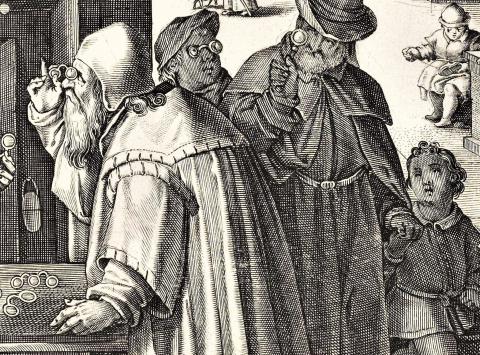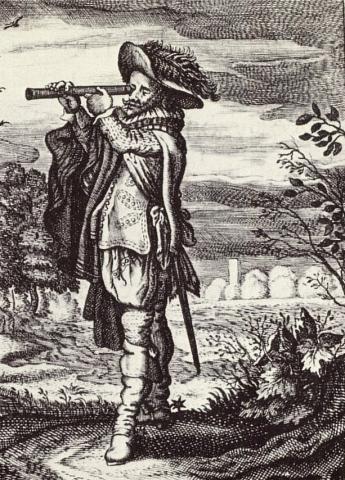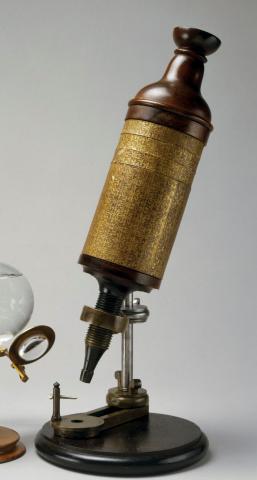Repairing the Senses: Glass, Telescope, Microscope
This lecture discusses the emergence of glassmaking in Islamic world and Christian Europe, with a brief reference to the practice of the craft in China (where it was far less important than the development of ceramics or metals). Before the innovation of glass-blowing in the 1st Century BCE, glass was made primarily for decorative beads in Egypt, Mesopotamia and Syria; the use of glass in windows, and the technical development of the art continued in the Roman Empire until the C5th CE. With the development of the Silk Road, and the arrival of Islam, glassmaking techniques in different parts of the Islamic world merged to some extent, while new techniques such as ’thread trailing’ were developed. In the so-called ‘Golden Age’ of Islamic glassmaking (11th-C13th), a number of new clusters of expertise in marvering, enamelling and gilding arose in Aleppo, Damascus, and Hebron, in addition to older centres like Cairo.
The centre of expertise switched to Italy and Bohemia during the later medieval period, notably to Venice and Florence. Following the Sack of Constantinople during the Fourth Crusade in 1204, the Venetian Republic controlled a number of places of glassmaking excellence in the Byzantine empire, as well as the glass export trade and also the import of crucial main ingredients. Murano became the major centre of high-quality glass production, particularly of clear glass production (especially of cristallo from 1400).
In the final part of the lecture, attention was drawn to the chronological coincidence and possible intersection between the development of optical theory in the Christian West, and the development of glassmaking techniques (notably the development of spectacles) in the second half of the C13th. In questions following the lecture, the possibility of the same sort of linking between theory and practice in the Islamic world was also raised. For the later centuries of the period covered by the course (1500-1700), the contribution to natural philosophy made by the natural magic tradition (whose greatest exponent was Giambattista della Porta) was related to the development of lenses, the discovery and astronomical use of the telescope, the development of the microscope, and more broadly, the significance of glass for the Scientific Revolution as a whole (telescopes, microscopes, barometers, thermometers, prisms and air-pumps to name the most important). More generally still, the case brings up the issue of the role of lensed instruments in changing the Art/Nature relationship that underpinned science/ natural philosophy.



